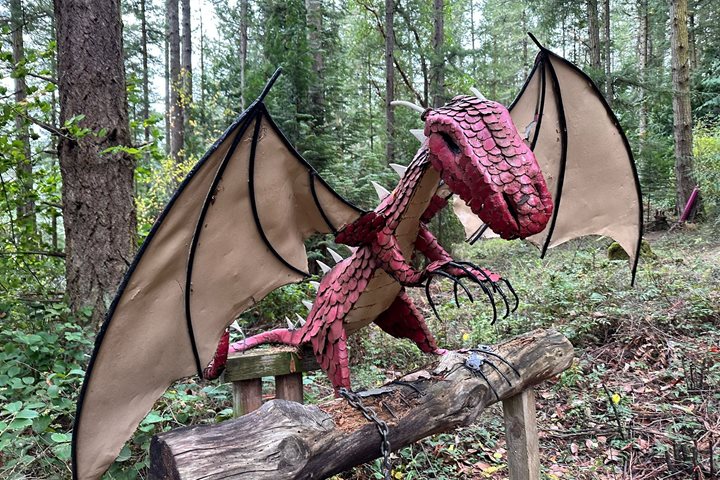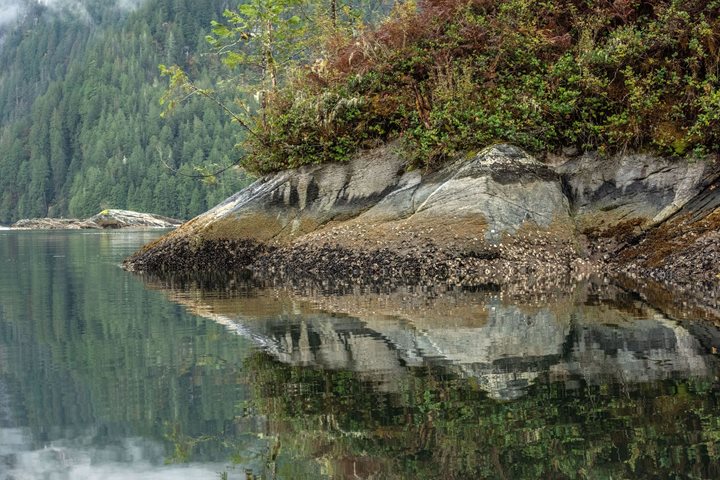Throughout the night, National Geographic Sea Bird continued her northerly journey, making her way toward our morning destination of Black Fish Sound. This large body of water is located just south of Cormorant Island near the northern end of Vancouver Island.
As the sun rose in a partly cloudy sky, our captain made a sharp right turn and entered the waters of Black Fish Sound. Wildlife was all around us, and we spent the morning watching. A group of humpback whales
We then began our short passage to the community of Alert Bay. We were hosted by the ‘Namgis of the Kwakwaka’wakw people. Our visit was centered around the U’mista Cultural Centre, which was established in the early 1980s and houses a repatriated potlatch collection. The artifacts were confiscated by the Canadian authorities in 1921, during a period when all things relating to indigenous culture were deemed illegal.
Our group enjoyed walks on Cormorant Island before a final gathering at the U’mista center where local guides took us through the potlatch collection. We explored the other exhibits and the gift shop, and just before returning to our waiting ship, we were treated to traditionally prepared salmon and
Back on board, National Geographic Sea Bird made ready for departure. As the ship slowly turned south, we were blessed with a spectacular sunset. While in Alert Bay, we were made aware of the recent loss of a young member of the community. As the sky turned a deep red and orange with soft shades of blue, we were reminded of the words of an elder who thought of the reflections on the surface of the water as the spirit of that young man, moving to the other side and looking back toward home.
These small, remote villages along the northwest coast where First Nations have lived for thousands of years are remarkable. They are filled with people who are part of a rich renaissance reflected in language, cultural celebrations, and world-class art. There







